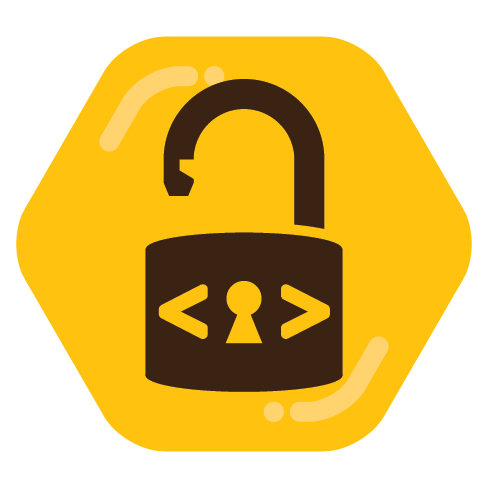I am using duplicati and thinking of switching to Borg. What do you use and why?
There is no such thing as the objectively best solution. Each tool has advantages and disadvantages. And every user has different preferences and requirements.
Personally, I am using Borg for years. And I have had to restore data several times, which has worked every time.
In addition to Borg, you can also look at Borgmatic. This wrapper extends the functionality and makes some things easier.
And if you want to use a graphical user interface, you can have a look at Vorta or Pika.
Agree. Should say ‘best for you’. Cool thanks. I know of Vorta which I intended of using. Gonna read up on the other ones.
I use restic. For local backups, Timeshift.
Seconded, I use restic with a remote blob storage and works nicely
Using borg backup, just because there are some nice frontends for the gnome ecosystem (when I am using gnome, I love to use gnome apps), and it has a nice cmd for scripting when using something else (using it on servers)
And there is a nice graphical frontend for it too: Vorta
Personally more of Pika Backup user ;)
I don’t have backups. :/
And I will regret it some day.
There are two kinds of people.
Those who make backups and those who will.You very much will. It’s easier than you’d think.
automated/networked backups like people are talking about here are great, but even just an external SSD and the nautilus copy function will give you at least some insurance.
Kopia has served me great. I back up to my local Ceph S3 storage and then keep a second clone of that on a raid.
Kopiahas good performance and miltiple hosts can back up tp it concurrently while preserving deduplication – unlike borgbackup.
Kopia has been working great for me as well. It’s simple, versatile and reliable. I previously used Duplicati but kept running into jobs failing for no reason, backup configurations missing randomly and simple restores taking hours. It was a hot mess and I’m happy I switched.
I want to love kopia but the command line syntax feels unnatural to me. I don’t know why either. For the whole month I test drove it, I had to look up every single time how to do something. Contrast this with restic which is less featureful in some ways but a few days in it felt like I was just using git.
I never used the command line with Kopia besides starting it up in server mode and used the web based GUI to configure, it was pretty simple to get everything setup that way. You may want to give it another try using Kopia in that mode.
My use case is for headless machines which makes it a no go in that regard unfortunately.
You can use the web ui remotely.
Personally I use it from command line, though, and my only complaint is that it’s too easy to start a backup you didn’t intend to… Buut if you’re careful about usong the
kopia snapshotcommand then it’s fine.Oh I thought the webui was only for server mode.
I just quickly glanced through the manuals of both restic and kopia. I think my trouble with kopia is that its style feels kind of weird. I’m just not able to wrap my head around it well.
kopia snapshot create /diris shorter but more confusing thanrestic -r repo backup /dir
deleted by creator
I’ve been using restic. It has built-in dedup & encryption and supports both local and remote storage. I’m using it to back up to a local restic-server (pointing to a USB drive) and Backblaze B2.
Restores for single or small sets of files is easy: restic -r $REPO mount /mnt Then browse through the filesystem view of your snapshots and copy just like any other filesystem.
I use NixOS so all my system configuration is already saved in my NixOS configs, which I save on GitHub. For dotfiles that aren’t managed by NixOS I use syncthing to sync them between my devices, but no real backup cause I can just remake them if I need to, and things like my Neovim and VSCode configs are managed by my NixOS configs so they’re backed up as well.
You can take this to the extreme too by erasing your root partition each boot: https://grahamc.com/blog/erase-your-darlings/
Using that method you isolate all important state on the system for backup with zfs send.
Yeah I have a full impermanence setup using tmpfs, which is really nice. I did it like on the NixOS wiki and it’s been helpful for organizing my dotfiles and keeping track of all the random stuff that programs put everywhere.
I actually have all my stuff in a separate /stuff folder kinda by accident so my /home only has dotfiles and things like that.
I’ve used borg for a while and like it a lot. I would say your best option for pure linux is borg+borgmatic/vorta just because borg is battle-tested.
If you run any other OSs and don’t mind a relative newcomer, I’ve found kopia to be easy to recommend to my windows friends. At this point kopia has been around long enough (~4 years of actual beta) that I think it’s safe to trust its integrity with personal data. It has all the important features from borg in a cross-platform solution, so it’s also a viable alternative for borg on linux if you don’t like borg’s frontends for whatever reason.
I just use
rsyncto backup my home folder to my NAS.- Btrfs for local system backups based on snapshots
- Photoprism for photos
- Syncthing for other media
You will reconsider calling strategy a backup should the filesystem get corrupted for whatever reason.
I’ve tested my full system backup restore once with btrfs. Worked out fine.
I use btrfs snapshots and btrbk
btrfs is a great filesystem and btrbk complements it easily. Switching between snapshots is also really easy if something goes wrong and you need to restore.
Archwiki docs for btrfs: https://wiki.archlinux.org/title/Btrfs#Incremental_backup_to_external_drive
Of course you’d still want a remote location to backup to. You can use an encrypted volume with cloud storage. So google drive, etc all work.
This is the way !
Thanks. Heard a lot about it. Will chack it out.
Oh interesting! I might take a look at btrbk
This is what I do. Btrfs snapshots and use send/receive with my NAS.
What problem are you trying to solve? Please think about that, and about your backup strategy, before you decide on any specific tools.
For example, here are several scenarios that I guard against in my backup strategy:
- Accidentally delete a file, I want to recover it quickly (snapshots);
- Entire drive goes kablooie, I want my system to continue running without downtime (RAID)
- User data drive goes kablooie, I want to recover (many many options)
- Root drive goes kablooie, I want to recover (baremetal recovery tools)
- House burns down or computer is damaged/stolen (offsite backups)
I started using Timeshift when it was included with a distro I was using and haven’t had reason to shift away from it. Have already used it once to do a full restore.
I just use a script on an systemd timer. Well two scripts on two timers really - one running daily, one weekly for different data. It’s just a bunch of rsync commands copying folders to an hdd in my system and I reroute the output into a simple log file, mainly to verify if it ran at all. I am a bit paranoid about that. I can also run it manually whenever I want. Oh and some of the data I also rsync again to a smb cloud drive from Hetzner. I do not keep multiple versions and I delete remote files that have been deleted locally. It’s just a 1:1 copy.
Oh and I use OpenSuse Tumbleweed so I have auto configured btrfs snapshots. Though I have not needed them yet and could not even say how I can use those. I figure that out once I need them.I’ve tried alternatives but I’ve stuck with LuckyBackup even though there have not been any updates for a while:
- It’s rsync based - which is updated
- It has masses of GUI options including various include/exclude options, pre- and post-commands, etc.
- It’s simple - I can browse inside the backed files and see what is going on, or just restore back one or two files.
- It updates cron itself.
















